Discover 11 hidden attractions, cool sights, and unusual things to do in Sanaa (Yemen). Don't miss out on these must-see attractions: Saleh Mosque, Great Mosque of Sanaa, and Yemen Military Museum. Also, be sure to include Ghumdan Palace in your itinerary.
Below, you can find the list of the most amazing places you should visit in Sanaa (Amanat Al Asimah).
Table of Contents
Saleh Mosque

Also known as: جامع الصالح
Mosque in Sana'a, Yemen. The People's Mosque is a modern mosque in Sana’a that is the largest in Yemen. It lies in the southern outskirts of the city, south of the Al Sabeen Maternal Hospital. Originally named Al Saleh Mosque, it was inaugurated in November 2008 by the late Yemeni President Ali Abdullah Saleh. The mosque, 27,300 square metres in size, has a central hall that is 13,596 square metres with an occupancy capacity of 44,000. The building cost nearly US$60 million to construct. Open to non-Muslims, the mosque is frequented by tourists, and promotes moderate Islam.[1]
Great Mosque of Sanaa
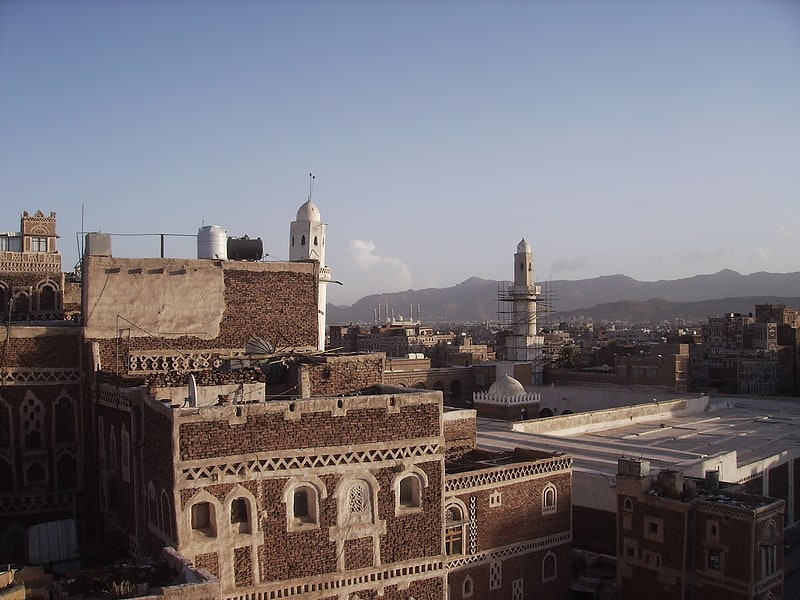
Also known as: الجامع الكبير
Mosque in Sana'a, Yemen. The Great Mosque of Sana'a is an ancient mosque in Sana'a, Yemen, and one of the oldest mosques in the world. The mosque is said to have been founded in the early Islamic period, suggested to be in 633. While the precise date of construction is unknown, the earliest recorded renovations occurred under Caliph al-Alid I in the early 8th century, implying a possible earlier date of construction. The mosque was reportedly built in part from spolia from the Himyarite-era Ghumdan Palace and from the Axumite Christian Church of al-Qalis that formerly occupied the site. The Great Mosque is the largest and most notable of over one hundred mosques in the Old City of Sana’a.
The building has undergone renovations in the 8th century, the 13th century, and in the Ottoman period. An important archaeological find was the Sana'a manuscript, discovered there during restoration in 1972. Today, the Great Mosque of Sana’a is part of the UNESCO World Heritage Site of the Old City of Sana'a.[2]
Yemen Military Museum

Also known as: المتحف الحربي
Museum in Sana'a, Yemen. The Yemen Military Museum or The Military Museum is a museum in central Sana'a, Yemen. It is located on the southwestern corner of the Al-Tahrir Square, next to the National Library of Yemen. It has a wide range of artifacts from ancient artifacts to items during the British occupation and subsequent revolution.[3]
Ghumdan Palace
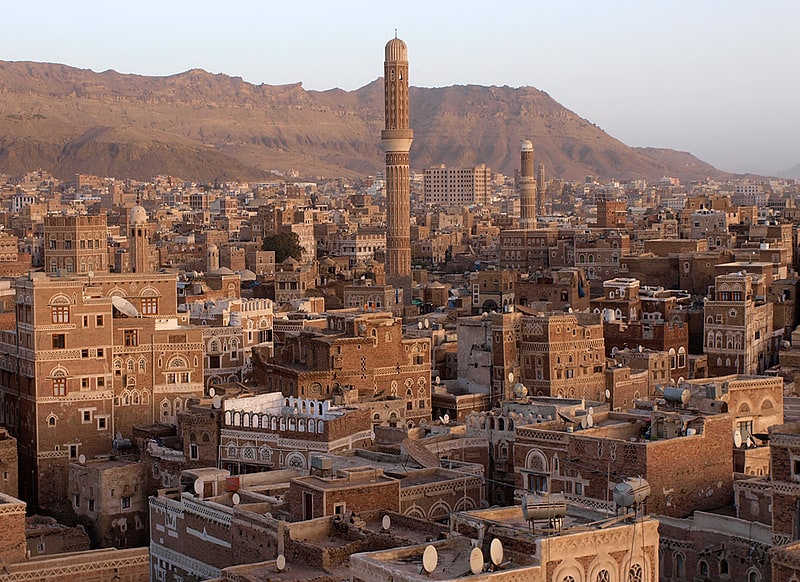
Also known as: قصر غمدان
Fortress in Sana'a, Yemen. Ghumdan Palace, also Qasir Ghumdan or Ghamdan Palace, is an ancient palace and fortress in Sana'a, Yemen. It is the earliest known castle in the world. All that remains of the ancient site of Ghumdan is a field of tangled ruins opposite the first and second of the eastern doors of the Jami‘ Mosque. This part of Sana'a forms an eminence which is known to contain the debris of ancient times. The place is located on the extreme southeastern end of Sana'a's old walled city, al-Qaṣr, just west of where the Great Mosque of Sana'a was later built, and is part of the UNESCO World Heritage Site of the Old City of Sana'a. It is sometimes referred to as Ghumdan Tower.
According to Arab geographer and historian, Al-Hamdani (c. 893-945), the foundation stones of Ghumdan Palace were laid by Shem, the son of Noah, and finished by the Sabaean monarch Ilī-Sharḥa Yaḥḍib (ca. 8th century BCE), the father of Bilqis. Others say that it was built by Sha'r Awtar who walled the city of Sana'a, while yet others suggest that it may date to pre-Islamic times, constructed by the Sabaeans during the reign of the last great Sabaean King El Sharih Yahdhib (ca. 60-20 BCE). Some historians date it to the beginning of the 2nd century or the 1st century. The palace was destroyed by Caliph Uthman, or even earlier, by the Abyssinian conqueror Abrahah Al-Hubashi. Restored several times, the palace history is represented in numerous legends and tales. It is mentioned in many pieces of Arabic poetry, the poets singing about its beauty. Ghumdan Palace tower, a 20-storey high-rise building, is believed by some to have been the world's earliest skyscraper.[4]
Dar al-Hajar

Also known as: دار الحجر
Palace in Yemen. The Dar al-Hajar is a former royal palace located in Wadi Dhar about 15 kilometres from Sana‘a, Yemen. Built in the 1920s as the summer retreat of Yahya Muhammad Hamid ed-Din, ruler of Yemen from 1904 to 1948, it sits on top of a structure built in 1786 for the scholar al-Imam Mansour. The palace stayed in the royal family until the Yemen revolution of 1962. The palace is now a museum. In 1974, Pier Paolo Pasolini used the palace as the home of Princess Dunya in his film The Arabian Nights.[5]
Al-Bakiriyya Mosque
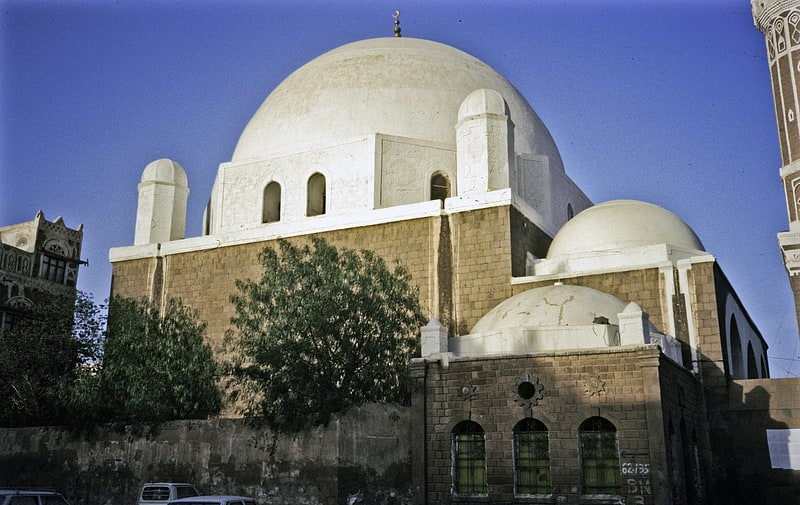
Also known as: جامع البكيرية
Mosque in Sana'a, Yemen. Bakiriyya Mosque is a mosque constructed in Sana'a around 1596–97 by the Ottoman governor of Yemen, Hasan Pasha. The mosque fell into disrepair after the Ottomans were driving out of Yemen in 1626 but was fully restored when the Ottomans recaptured Sana'a in 1878.[6]
Al-Mahdi Mosque
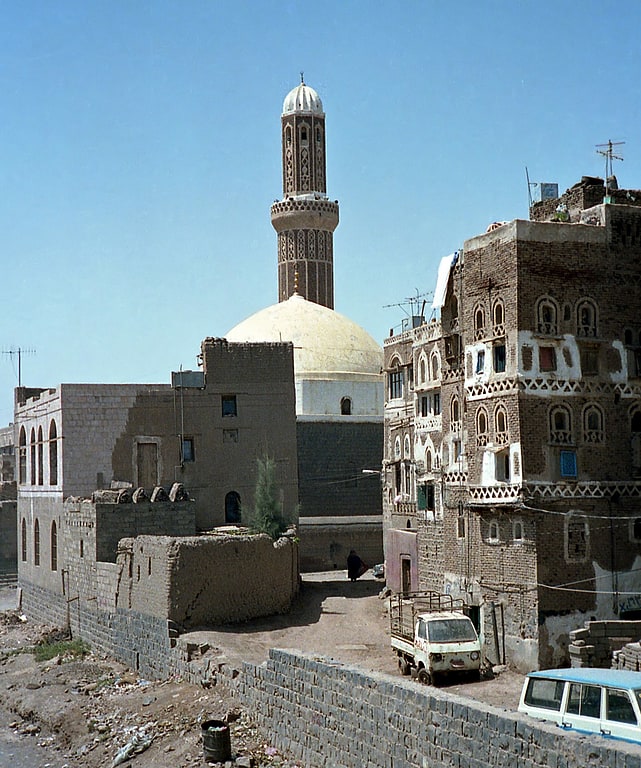
Also known as: جامع قبة المهدي
Mosque in Sana'a, Yemen. The Mosque of the Dome of the Mahdi or Al-Mahdi Mosque is one of the historical mosques in the historic old city of Sana'a, Yemen. It forms a part of UNESCO World Heritage Site Old City of Sana'a. It is located in the Al-Kareem Al-Mahdi neighborhood in the western Sarar district. It was built in 1651 by the order of Imam Mahdi Abbas bin Mansour. The tomb was built after the death of Imam Mahdi Abbas in 1768.[7]
Talha Mosque
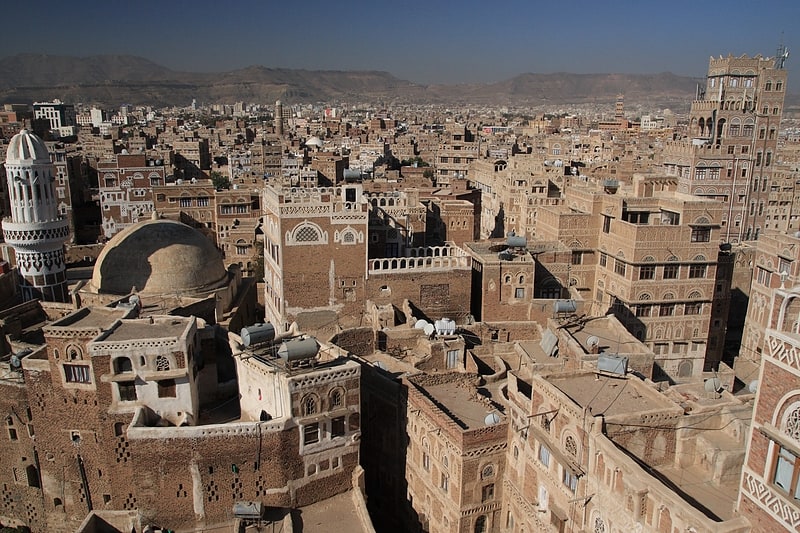
Also known as: قبة طلحة
Mosque in Suqian, China. Talha Mosque or Qubbat Talha, one of the oldest mosques in Sana'a, was built by order of the Ottoman Wali Hadji Mehmed Pasha from 1619 to 1620, during the first Ottoman occupation. The minaret was built at the same time.[8]
Yemen Gate
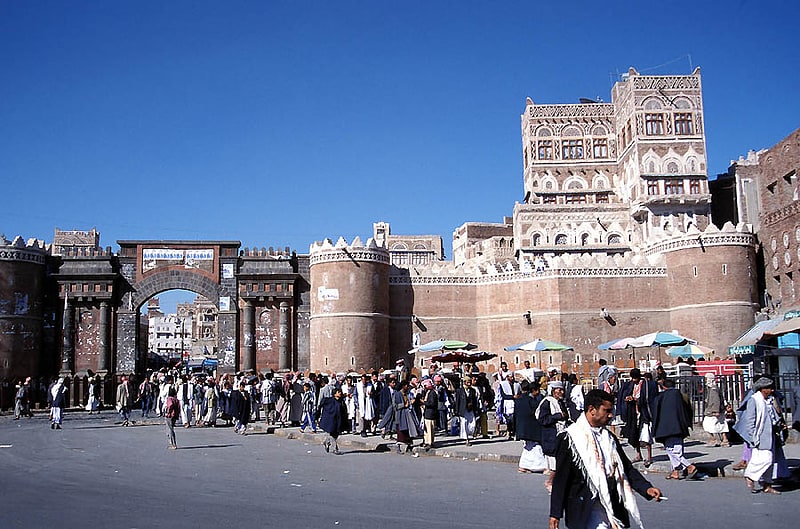
Also known as: باب اليمن
Historical landmark in Sana'a, Yemen. The Yemen Gate or Gate of Yemen is the main gate of Sana's old fortified wall, on the southern extremity of the walled city. Its current appearance dates to the 17th century, having been designed by Sam the son of Noah. Today, it is the most ornate of the gates of Sana's Old City. Passengers travelling southward, en route to Ma'bar and Dhamar, would depart from this gate.
As one enters the gate, one quickly notices the Yemeni architecture, high towering houses made of baked bricks decorated and waterproofed with lime plaster and qadad, one of the characteristic features of Sana's Old City. Many of the houses make use of decorative windows, designed as fanlights fitted with stained glass, enclosed within muntins of gypsum plaster and lime-coated sash. Windows that are typical of the Old City of Sana'a are the alabaster qamariyyah, and the stained glass fanlight (‘aqd mulawwan). The Great Mosque of Sana'a is located about 300 yards from the Yemen Gate. The old city of Sana'a is listed as a UNESCO World Heritage Site due to its unique architectural characteristics, most notably expressed in its multi-storey buildings decorated with geometric patterns.
The brass rings on the left and right columns at the entrance of the Yemen Gate were made by Jewish artisans during the period of the monarchy under the Imams.
Opposite Bab al-Yaman to the north of the Old City is Bab es-Sha'ub.[9]
Bayt Baws
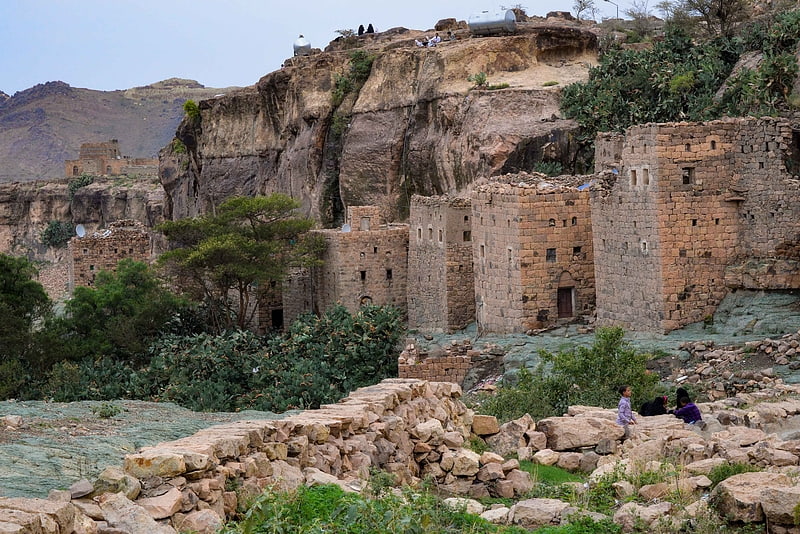
Bayt Baws is a historic village and fortress in Bani Matar District of Sanaa Governorate, Yemen. It is a largely deserted Jewish settlement. It is located to the south of Sanaa, in a strategic position on the western side of the Sanaa plain. It served as a locally important stronghold throughout the middle ages and was especially used as a staging point for campaigns against Sanaa. Its period of greatest significance was during the campaigns of Al-Hadi ila'l-Haqq Yahya, the first Imam of Yemen. According to tradition, Bayt Baws is named after a person named Dhū Baws, whose genealogy is given either as Dhū Baws b. ‘Abd al-Rahmān b. Zayd b. ‘Abd Il b. Sharḥabīl b. Marāthid b. Dhī Saḥar or as Dhū Baws b. Barīl b. Sharaḥbīl, of the tribe of Himyar.[10]
Tahrir Square
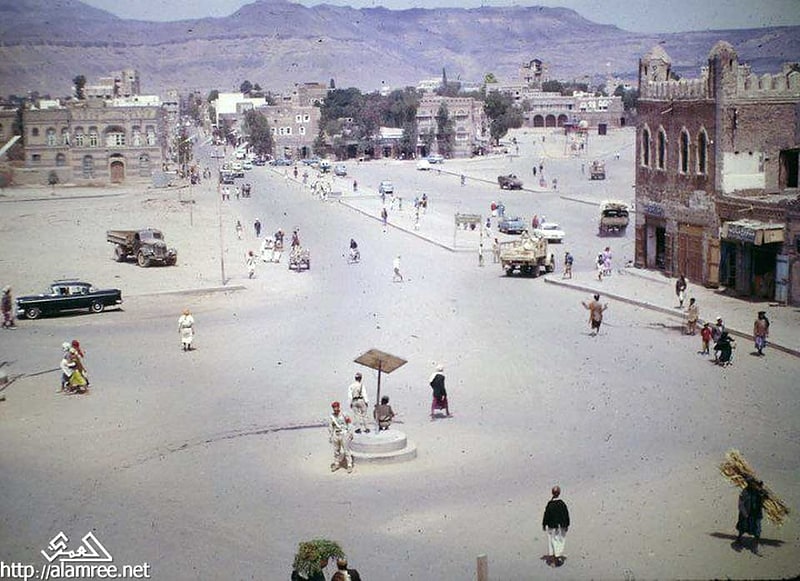
Also known as: ميدان التحرير
Al-Tahrir Square, also Al-Tahreer Square or Tahreer Square is a square in central Sanaʽa, Yemen. It is located west of the Abbas Mosque and the Sultan Palace Hotel, south of the National Museum of Yemen and north of the Yemen Military Museum. Protests took place here during the 2011 Yemeni uprising, involving clashes between supporters of President Saleh and his detractors. Tawakel Karman, awarded the 2011 Nobel Peace Prize, made her headquarters a tent pitched at the Square, where she has led weekly Tuesday protests since 2007.
The square was a focal point of the 2014 Yemen protests as part of the Houthi rebellion. On 9 October 2014, a suicide bomb tore through Tahrir Square while Houthis were preparing for a rally. The attack killed 47 people and wounded 75, and has been blamed on al-Qaeda in the Arabian Peninsula.
The square has been used by Houthis for public executions.[11]